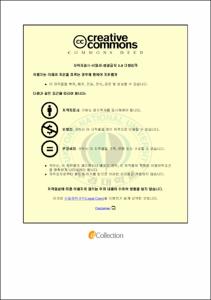불소를 함유한 UV경화 폴리우레탄 아크릴레이트 합성 및 복합체 제조에 따른 특성 연구
- Abstract
- UV-curable resin refers to a resin with an unsaturated group like C=C in its molecular structure, which is cured by photo-initiator when it exposures light (UV ray). UV curing is conducted quickly at a low temperature, so it saves energy and it has excellent coating performance and curing characteristics. In addition, since it is in a liquid form using reactive acrylic monomers, it has the advantage in VOC problems caused by organic solvent because reactive acrylic monomers acts as a diluent. In this study, polyurethane acrylates
containing hydrophobic fluorine group were synthesized in order to introduce a water-repellent property through UV curing. H12MDI with excellent yellowing resistance and water resistance was used as isocyanate. Polycarbonate diol (PCDL) and perfluoropolyether diol (PFPE) were used as polyol. As increasing PFPE content upto 10 % in polyol, the contact angle of polyurethane acrylates increased from 75.9∘ to 107.1∘. However, their mechanical properties were almost unchanged, regardless of PFPE content. This result indicates that the surface hydrophobicity can be achieved by the introduction of PFPE in polyurethane acrylates. Also, the effect of adding lotus leaf powder into the polyurethane acrylates on surface property was investigated. The polyurethane acrylate composite with 2 wt% lotus powder showed that their contact angle improved up to 120.6∘. Therefore, the surface hydrophobicity of UV-curable polyurethane acrylate could be improved by physical and chemical mixing of hydrophobic compounds.
- Issued Date
- 2015
- Awarded Date
- 2015. 2
- Type
- Dissertation
- Publisher
- 부경대학교
- Affiliation
- 부경대학교
- Department
- 대학원 고분자공학과
- Advisor
- 이원기
- Table Of Contents
- Contents
Contents......................................................................................................................ⅰ
List of Tables...........................................................................................................ⅲ
List of Figures..........................................................................................................ⅳ
Abstract.......................................................................................................................ⅵ
제 1 장 서론...............................................................................................................1
제 2 장 이론적 배경
2-1 폴리우레탄.........................................................................................................4
2-2 폴리우레탄 아크릴레이트..............................................................................6
2-3. 연잎 효과..........................................................................................................7
2-4. UV경화 폴리우레탄 아크릴레이트의 원료특성......................................8
2-5. UV(자외선)경화.............................................................................................12
제 3 장 실 험
3-1. 재료...................................................................................................................22
3-2. UV경화 폴리우레탄 아크릴레이트의 프리폴리머 합성......................24
3-3. Lotus leaf powder(LLP) 제조...................................................................25
3-4. PUA/LLP 복합체 제조................................................................................25
3-5. UV경화제 제조..............................................................................................25
3-6. UV경화 코팅제 및 측정시편 제조............................................................30
3-7. 측정...................................................................................................................31
제 4 장 결과 및 고찰
4-1. FT-IR 분석...................................................................................................34
4-2. ATR-FTIR 분석.........................................................................................35
4-3. 점도 분석.......................................................................................................38
4-4. 표면조성 분석(XPS)...................................................................................40
4-5. 열적 특성.......................................................................................................43
4-6. 동역학적 특성(유리전이온도, 저장탄성률)...........................................47
4-7. 기계적 특성...................................................................................................50
4-8. 접촉각 측정...............................................................................................................53
4-9. PUA/LLP 복합체의 모폴로지.............................................................................57
4-10. PUA/LLP 복합체의 접촉각 측정....................................................................59
제 5 장 결론.............................................................................................................62
References.................................................................................................................64
- Degree
- Master
- Files in This Item:
-
-
Download
 불소를 함유한 UV경화 폴리우레탄 아크릴레이트 합성 및 복합체 제조에 따른 특성 연구.pdf
기타 데이터 / 1.53 MB / Adobe PDF
불소를 함유한 UV경화 폴리우레탄 아크릴레이트 합성 및 복합체 제조에 따른 특성 연구.pdf
기타 데이터 / 1.53 MB / Adobe PDF
-
Items in Repository are protected by copyright, with all rights reserved, unless otherwise indicated.